
Dave Smith cuts through the misconceptions that muddle our beliefs about bears and gives us clear thinking about living in bear country. The book is a joy for people who know bears and a must-read for those who fear them.
Lynn Rogers, Ph.D., Director,
North American Bear Center
Backcountry Bear Basics is a thorough and well-written examination of fact versus fiction as to proper behavior in bear country. I strongly recommend it for all users of bear country as well as anyone with an interest in bears.
Chuck Neal, author of Grizzlies In The Mist,
retired ecologist, U.S. Dept. of Interior
Some conventional wisdom about bear behavior is actually superstition. By exposing several myths, Smith elevates his original fine book on backcountry bear safety into an invaluable resource. I recommend it highly and use it in my courses.
Stephen Stringham, PhD. Bear behavior researcher,
author of Bear Viewing in Alaska and
Beauty Within The Beast
Dave Smiths extensive first-hand experience, keen insight, and humor make Backcountry Bear Basics a must-read book for anyone that is going to spend time in bear country. Dave has distilled for the reader the most important elements for avoiding conflicts and presented them in a very readable format.
Tom S. Smith, professor, Brigham Young University.
former Research Wildlife Ecologist,
US Geological Survey
I use Backcountry Bear Basics in classes I teach at the University of Alaska, for bear safety training conducted for field crews, and recommend it to clients I take on brown bear photo trips. Its an excellent book and a must for the library of anyone traveling or living in bear country.
Derek Stonorov, Alaska Bear Quest LLC
If youre heading into bear country, or even if youre not, read this book. Ill continue to tout Backcountry Bear Basics as a superb source of information for anyone who wants to stay safe, and do right by bears. Its also a highly entertaining read.
Chris Morgan, Bear researcher and conservationist,
Executive Director, Insight Wildlife Management and
Co-Director, Grizzly Bear Outreach Project (GBOP)
Bears are bears; they are individuals and they act the way they do for reasons that only they can really fathom. However, this book is the best guide to understanding them that I have seen. We need to give them space and respect and use common sense in bear country.
Lance Craighead, Executive Director,
Craighead Environmental Research Institute


This book is dedicated to my parents, who let me run wild in the woods while the other kids were stuck in Sunday school.
 |
THE MOUNTAINEERS BOOKS
is the nonprofit publishing arm of The Mountaineers Club,
an organization founded in 1906 and dedicated to the exploration,
preservation, and enjoyment of outdoor and wilderness areas. |
1001 SW Klickitat Way, Suite 201, Seattle, WA 98134
2006 by Dave Smith
All rights reserved
First edition 1997. Second edition: first printing 2006, second printing 2009, third printing 2011
No part of this book may be reproduced in any form, or by any electronic, mechanical, or other means, without permission in writing from the publisher.
Distributed in the United Kingdom by Cordee, www.cordee.co.uk
Manufactured in the United States of America
Project Editor: Susan Hodges
Copyeditor: Susan Hodges
Cover and Book Design: Karen Schober Book Design
Layout: Marge Mueller, Gray Mouse Graphics
Cover photograph: Brown bear Ferenc Cegled, Shutterstock, Inc.
Frontispiece: Grizzly tracks
A Cataloging-in-Publication record is on file at the Library of Congress. Library of Congress Control Number: 2006018155
 Printed on recycled paper
Printed on recycled paper
ISBN (paperback): 978-1-59485-028-8
ISBN (ebook): 978-1-59485-243-5
Contents
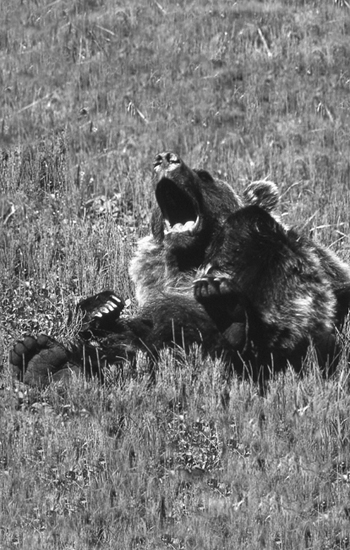
Sleepy bears yawn, but during an encounter with another bear or a person, yawning is a sign of anxiety. Bear behavior can be complex.
Acknowledgments
It seems like Doug Peacock and I have spent more time talking about what to cook for dinner than the food habits of bears; nevertheless, his respect for the rights of grizzlies has had an enormous influence on my thoughts about the great bear.
I spend an inordinate amount of time dwelling on bears, so its been a pleasure discussing bears with many of the biologists and experts listed below. Their passion is inspiring. My thanks for reviewing the manuscript go to Larry Aumiller (Alaska Department of Fish and Game), Tom Beck (retired, Colorado Division of Wildlife); Steve French (Yellowstone Grizzly Foundation); Kerry Gunther (Yellowstone National Park); Polly Hessing, Colleen Matt (Alaska Department of Fish and Game); Rick McAdam (Yellowstone National Park); Lewis Sharman (Glacier Bay National Park); and Derek Stonorov (Alaska Department of Fish and Game). Im also grateful to Mike Swain and Ed Vorisek (Denali National Park) and Lisa Peacock for reviewing portions of the manuscript.
In phone conversations and correspondence, Steve French and Tom Beck were generous with their time and their understanding of bears. Talking bears with Alaska Department of Fish and Game biologist John Hechtel is always enlightening. Steve Herrero has been a great source for accurate, scientific data on bear attacks. Brighan Young University (BYU) professor Tom Smiths advice and encouragement have been invaluable.
Theres no way I can express my gratitude to the McNeil River crewLarry Aumiller, Polly Hessing, Colleen Matt, and Derek Stonorovfor sharing their knowledge of bears with me. Colleen in particular helped shape the book with her gentle insistence on finding ways to reach people with accurate facts about bears.
Others who helped along the way include Larry Campbell (Friends of the Bitterroot); Jasper Carlton (Biodiversity Legal Foundation); Hod Coburn, Mitch Friedman (Greater Ecosystem Alliance); Jim McBride, Keith Hammer (Swan View Coalition); Ken Leghorn, Jim Peaco (Yellowstone); Lynn Rogers, Roger Rudolph, John Scheerens, Tom Walker, and Louisa Willcox.
If Ive left anyone out, my apologies. If there are any factual errors in this book, theyre mine and mine alone.
NO GUARANTEES IN BEAR COUNTRY
There are no guarantees in bear country. Bears kill an average of three people a year in North America, and injure more. Following the recommendations in this book will reduce your risk of encountering a bear. Youll learn the best techniques for deterring a bear and minimizing injuries in the event of an attack. Ive consulted with numerous bear experts and wildlife agencies to insure the accuracy of this book. Nevertheless, interactions between bears and humans are incredibly complex, and I assume no liability for injuries or death by bears.
Next page
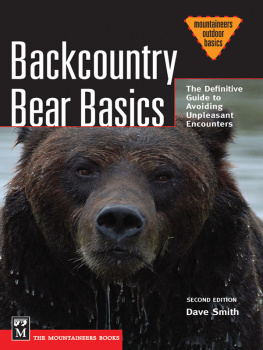
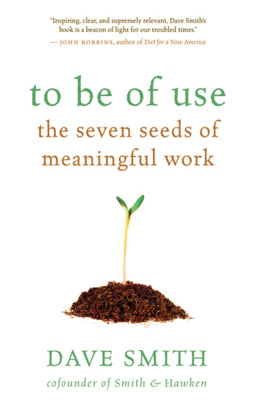




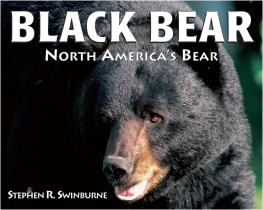
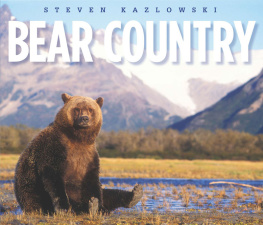

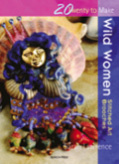
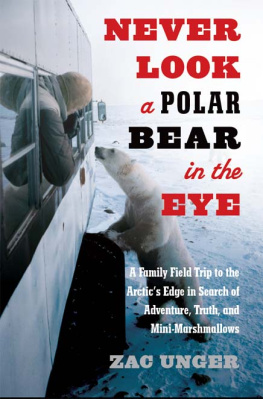

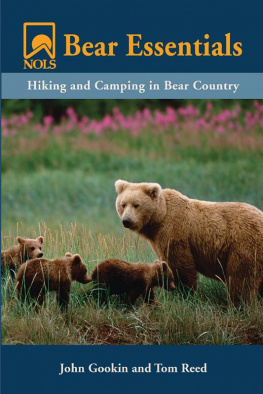


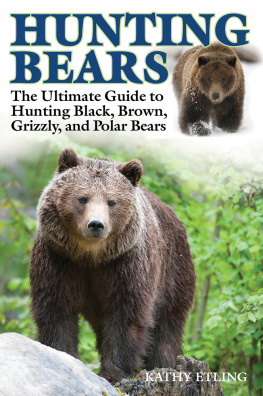




 Printed on recycled paper
Printed on recycled paper